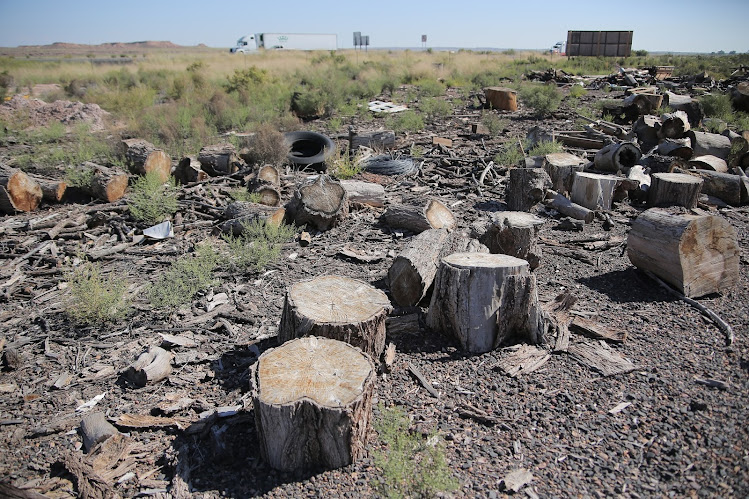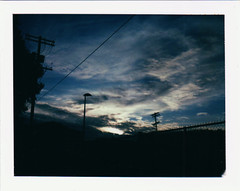The Lightning Field, a land art work by Walter de Maria, is an array of 400 stainless steel poles, arranged in a 1 mile by 1 kilometer grid in a remote location in the southwestern high desert in New Mexico. It was erected in 1977 and, as evocative as its name is, doesn't incur as much lightning as one would expect.
The Lightning Field was my first introduction to art defining space. As a freshman taking my first architecture theory class I was assigned to research and report on this piece, and initially found myself skeptical of yet intrigued by it. It sounded so simple, reductive, arbitrary. Yet I found my ignorance dissolving away as I learned of the massive effort to scout for the perfect location, then surveying the undulations of the land in the final spot, as well as securing a fabricator who could form every pole - each one of a different height according to where it would stand in the earth, each one equipped with its own hand-machined, pointed tip.
As much as the Lightning Field is a careful exercise in space, scale, and perspective, none of these could exist without light. At dawn, the poles shine pale, clean and delicate. We awoke to a cloudy dawn, so the effect was subdued, but as we weaved through the poles and as the sun crept higher in the sky we could see the field start to disappear! Then as afternoon wanes and evening approaches, the poles reassert their presence, and as the sun sets every pole seems to catch on fire and the entire field lights up, and at a glance you can almost fully comprehend its massive scale.
When I gave my presentation on the Lightning Field all those years ago, I likened it to a "religious experience" - a pilgrimage of sorts since visits aren't all that easy to arrange; visiting season is kept to a few months out of the year, only six visitors are allowed at a time, photography of the work is not permitted (hrm, should I even be showing the photo above? conflicted), and each visit is kept to less than 24 hours total - just enough to hike around and allow one to view the work at the most dynamic times of the day. I described my visit as "sublime" to a few people, who snickered despite themselves, or politely nodded in confusion/incredulity/bewilderment. I know what I felt though, and having not been this moved by art for years, I only slightly regretted being unable to describe the experience succinctly, elegantly, when presented with an inquiry about the trip. It is humbling to realize that some things can't fully be described and documented in words, and that as cliched as it sounds, you need to experience it for yourself.
As much as the Lightning Field is a careful exercise in space, scale, and perspective, none of these could exist without light. At dawn, the poles shine pale, clean and delicate. We awoke to a cloudy dawn, so the effect was subdued, but as we weaved through the poles and as the sun crept higher in the sky we could see the field start to disappear! Then as afternoon wanes and evening approaches, the poles reassert their presence, and as the sun sets every pole seems to catch on fire and the entire field lights up, and at a glance you can almost fully comprehend its massive scale.
When I gave my presentation on the Lightning Field all those years ago, I likened it to a "religious experience" - a pilgrimage of sorts since visits aren't all that easy to arrange; visiting season is kept to a few months out of the year, only six visitors are allowed at a time, photography of the work is not permitted (hrm, should I even be showing the photo above? conflicted), and each visit is kept to less than 24 hours total - just enough to hike around and allow one to view the work at the most dynamic times of the day. I described my visit as "sublime" to a few people, who snickered despite themselves, or politely nodded in confusion/incredulity/bewilderment. I know what I felt though, and having not been this moved by art for years, I only slightly regretted being unable to describe the experience succinctly, elegantly, when presented with an inquiry about the trip. It is humbling to realize that some things can't fully be described and documented in words, and that as cliched as it sounds, you need to experience it for yourself.












